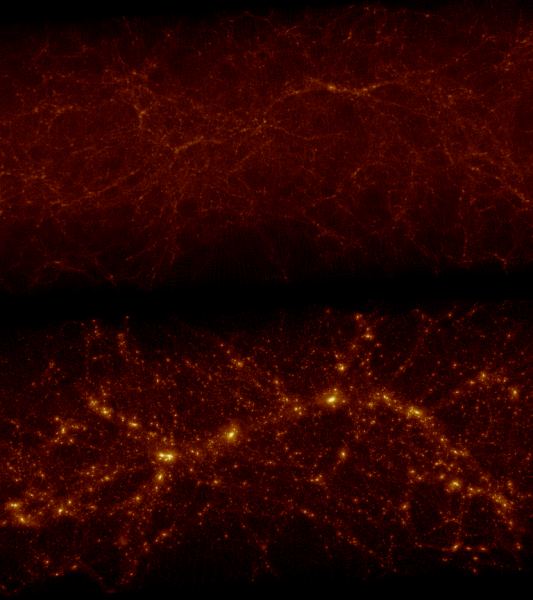In the earliest moments of the Universe, the first photons were trapped in a sea of ionized gas. They scattered randomly with the hot nuclei and electrons of the cosmic fireball, like tiny boats in a stormy sea. Then, about 370,000 years after the big bang, the Universe cooled enough for the photons to be free. After one last scattering, they could finally ply interstellar space. Some of them traveled across 14 billion years of space and time to reach Earth, where we see them as part of the cosmic microwave background. The remnant first light of creation.
Continue reading “A New Look a the Most Ancient Light in the Universe”The Big Bang: What is it? Why study it? What happened before? How will it all end?
Approximately 13.8 billion years ago, the greatest event in all of existence occurred that literally created existence itself. This event is known as the Big Bang, and it’s responsible for the estimated septillion number of stars that are scattered across the vast reaches of the unknown, including the one our small, blue world orbits. However, other than knowing that the Big Bang occurred, there is still a septillion amount of information we still don’t know about the greatest event in the history of existence.
Continue reading “The Big Bang: What is it? Why study it? What happened before? How will it all end?”Have We Seen the First Glimpse of Supermassive Dark Stars?
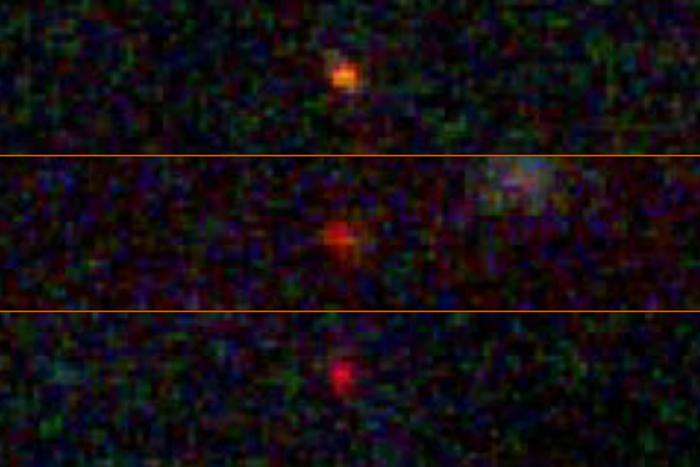
A recent study published in the Proceedings of the National Academy of Sciences (PNAS) examines what are known as dark stars, which are estimated to be much larger than our Sun, are hypothesized to have existed in the early universe, and are allegedly powered by the demolition of dark matter particles. This study was conducted using spectroscopic analysis from NASA’s James Webb Space Telescope (JWST), and more specifically, the JWST Advanced Deep Extragalactic Survey (JADES), and holds the potential to help astronomers better understand dark stars and the purpose of dark matter, the latter of which continues to be an enigma for the scientific community, as well as how it could have contributed to the early universe.
Continue reading “Have We Seen the First Glimpse of Supermassive Dark Stars?”Warm Carbon Increased Suddenly in the Early Universe. Made by the First Stars?
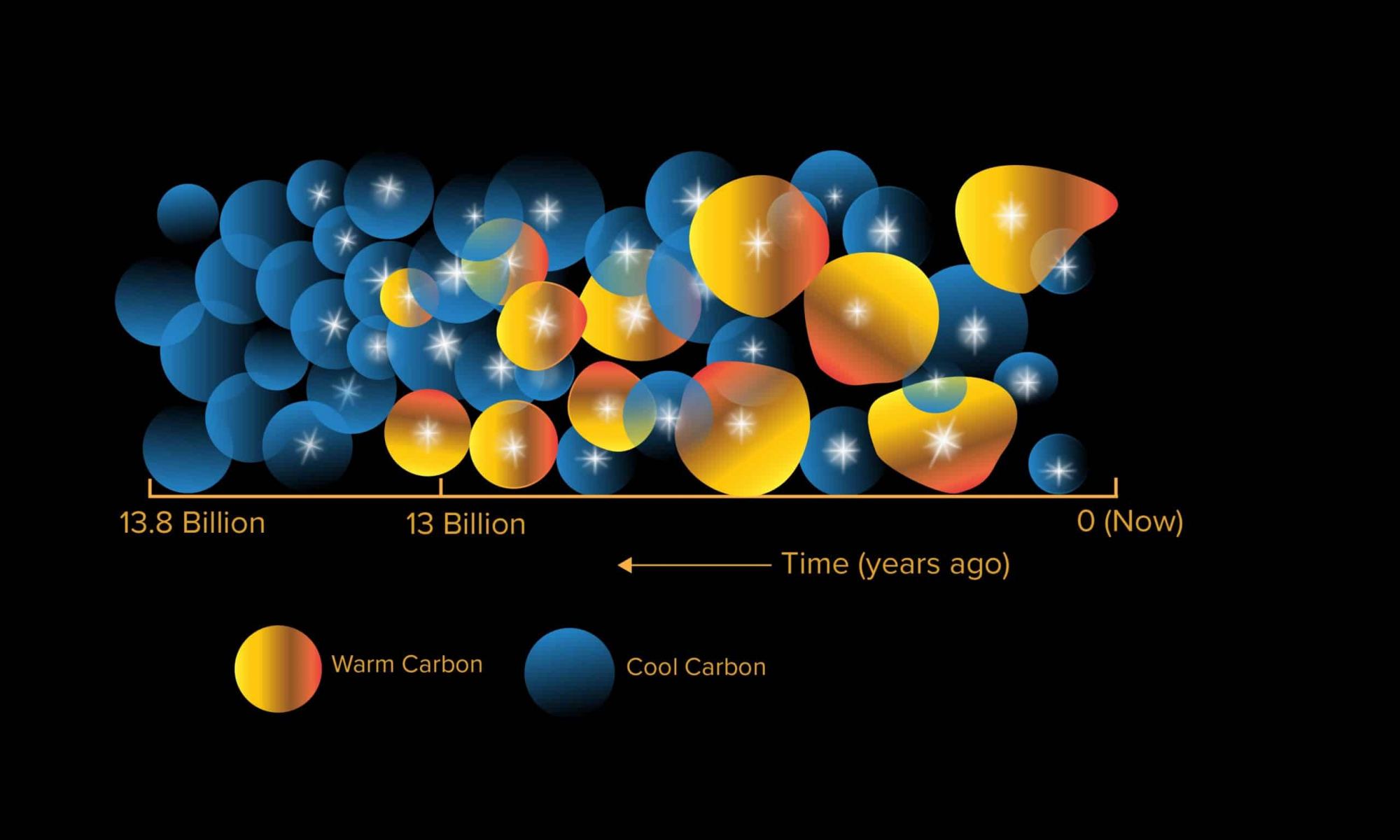
According to the most widely-accepted model of cosmology, the Universe began roughly 13.8 billion years ago with the Big Bang. As the Universe cooled, the fundamental laws of physics (the electroweak force, the strong nuclear force, and gravity) and the first hydrogen atoms formed. By 370,000 years after the Big Bang, the Universe was permeated by neutral hydrogen and very few photons (the Cosmic Dark Ages). During the “Epoch of Reionization” that followed, the first stars and galaxies formed, reoinizing the neutral hydrogen and causing the Universe to become transparent.
For astronomers, the Epoch of Reionization still holds many mysteries, like when certain heavy elements formed. This includes the element carbon, a key ingredient in the formation of planets, an important element in organic processes, and the basis for life as we know it. According to a new study by the ARC Center of Excellence for All Sky Astrophysics in 3 Dimensions (ASTRO 3D), it appears that triply-ionized carbon (C iv) existed far sooner than previously thought. Their findings could have drastic implications for our understanding of cosmic evolution.
Continue reading “Warm Carbon Increased Suddenly in the Early Universe. Made by the First Stars?”The Record for the Farthest Galaxy just got Broken Again, now just 250 million years after the Big Bang
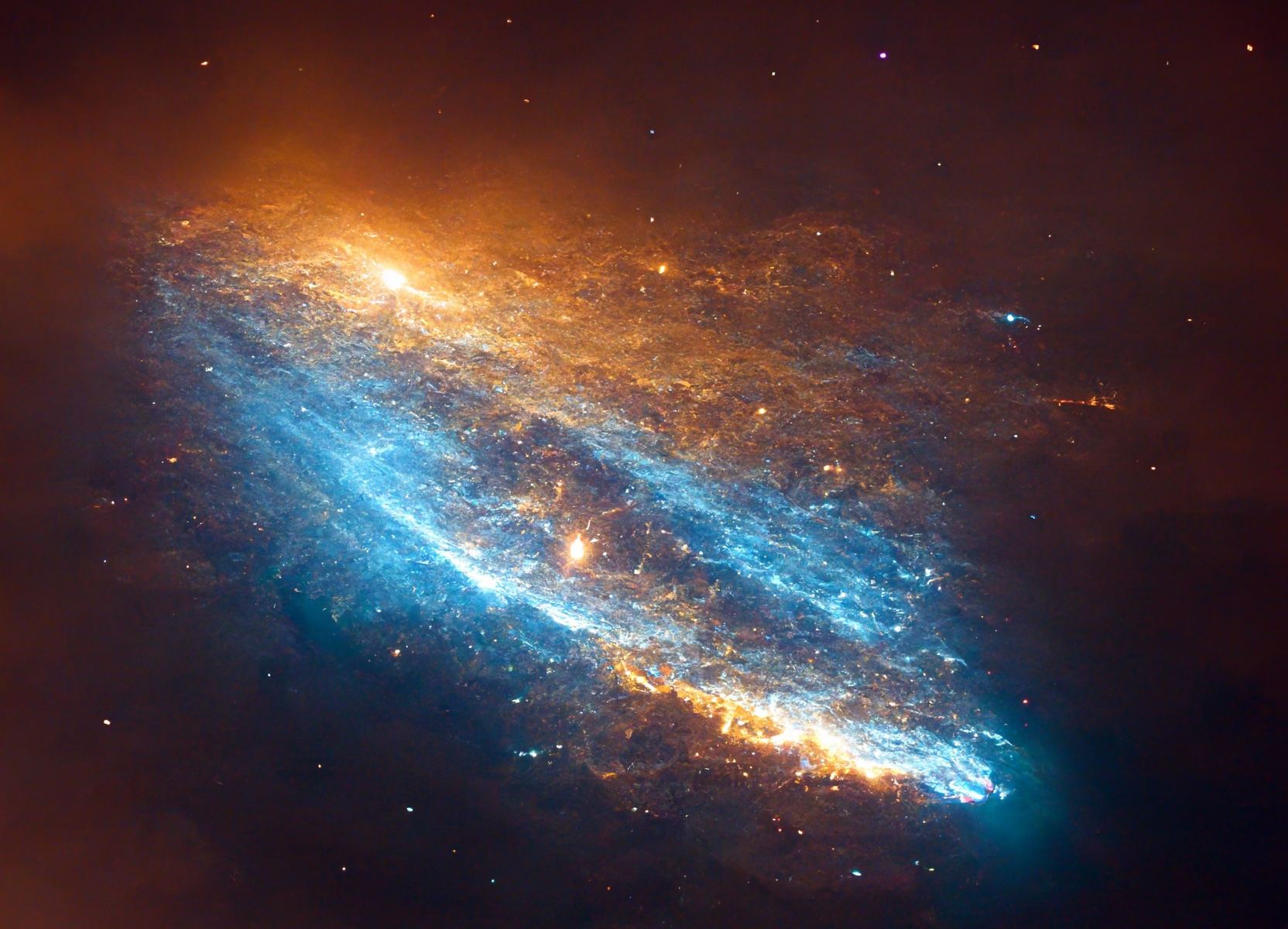
In a recent study submitted to MNRAS, a collaborative research team has utilized the first set of data from the James Webb Space Telescope (JWST) discovering a galaxy candidate, CEERS-93316, that formed approximately 250 million years after the Bing Bang, which also set a new redshift record of z = 16.7. This finding is extremely intriguing as it demonstrates the power of JWST, which only started sending back its first set of data a few weeks ago. CEERS stands for Cosmic Evolution Early Release Science Survey, and was specifically created for imaging with JWST.
Continue reading “The Record for the Farthest Galaxy just got Broken Again, now just 250 million years after the Big Bang”These Galaxies are Definitely Living in a Simulation
Studying the universe is hard. Really hard. Like insanely, ridiculously hard. Think of the hardest thing you’ve ever done in your life, because studying the universe is quite literally exponentially way harder than whatever you came up with. Studying the universe is hard for two reasons: space and time. When we look at an object in the night sky, we’re looking back in time, as it has taken a finite amount of time for the light from that object to reach your eyes. The star Sirius is one of the brightest objects in the night sky and is located approximately 8.6 light-years from Earth. This means that when you look at it, you’re seeing what it looked like 8.6 years ago, as the speed of light is finite at 186,000 miles per second and a light year is the time it takes for light to travel in one year. Now think of something way farther away than Sirius, like the Big Bang, which supposedly took place 13.8 billion years ago. This means when scientists study the Big Bang, they’re attempting to look back in time 13.8 billion years. Even with all our advanced scientific instruments, it’s extremely hard to look back that far in time. It’s so hard that the Hubble Space Telescope has been in space since 1990 and just recently spotted the most distant single star ever detected in outer space at 12.9 billion light-years away. That’s 30 years of scanning the heavens, which is a testament to the vastness of the universe, and hence why studying the universe is hard. Because studying the universe is so hard, scientists often turn to computer simulations, or models, to help speed up the science aspect and ultimately give us a better understanding of how the universe works without waiting 30 years for the next big discovery.
Continue reading “These Galaxies are Definitely Living in a Simulation”A New Record for the Most Distant Galaxy, Seen Just 300 Million Years After the Big Bang
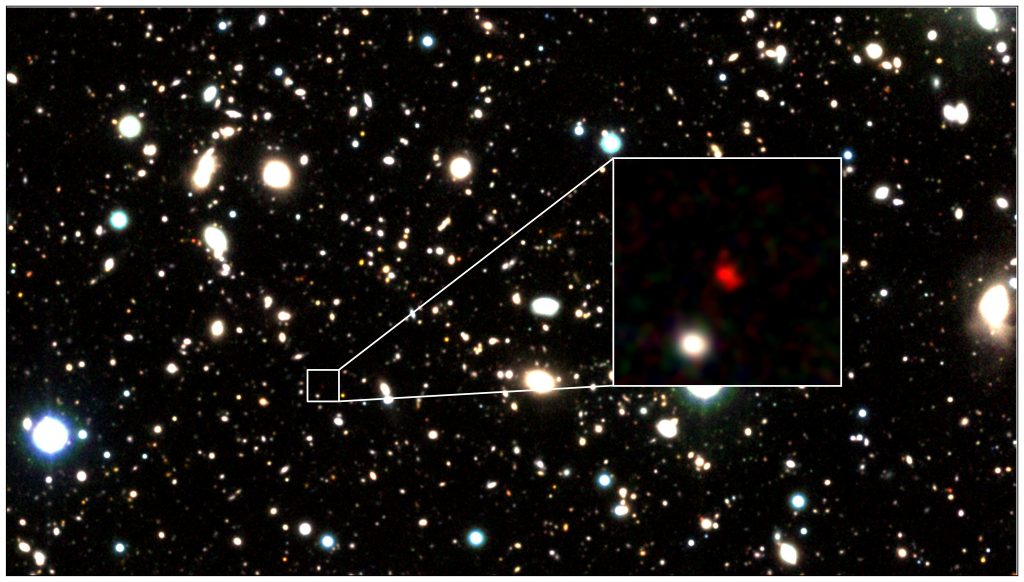
Since the Renaissance astronomer Galileo Galilee first studied the heavens using a telescope he built himself, astronomers have been pushing the boundaries of what they can observe. After centuries of progress, they have been able to study and catalog objects in all but the earliest periods of the Universe. But thanks to next-generation instruments and technologies, astronomers will soon be able to observe the “Cosmic Dawn” era – ca. 50 million to billion years after the Big Bang.
In recent years, astronomers have made discoveries that preview what this will be like, the most recent of which is the galaxy candidate known as HD1. This galaxy is about 13.5 billion light-years from Earth (32.2 billion light-years in terms of “proper distance“), making it the farthest ever observed. This discovery implies that galaxies existed as early as 300 million years after the Big Bang, a finding which could have drastic implications for astronomy and cosmology!
Continue reading “A New Record for the Most Distant Galaxy, Seen Just 300 Million Years After the Big Bang”Life Could be Common Across the Universe, Just Not in Our Region
The building blocks of life can, and did, spontaneously assemble under the right conditions. That’s called spontaneous generation, or abiogenesis. Of course, many of the details remain hidden to us, and we just don’t know exactly how it all happened. Or how frequently it could happen.
Continue reading “Life Could be Common Across the Universe, Just Not in Our Region”


